Wildlife crime is one of the greatest challenges facing conservation, and one of the conservation tech world's biggest areas of innovation. With new ideas and solutions constantly being put forth to track and protect species targeted by poachers, manage protected areas and support rangers, and combat the growing online market for illegal wildlife products, the engineers and conservationists working to solve wildlife crime's many challenges rely on tools like machine learning, biologging, camera traps, acoustic monitoring, drones, mobile apps, and more.
This wide variety of overlapping technology makes our Wildlife Crime group a potential melting pot for many of our other communities, and makes it an especially exciting place to find collaborators working in different tech spheres to meet a common goal. Whether you're a camera trap expert looking for information on thermal vision to spot potential poachers, a machine learning expert with the skills to analyze acoustic data for gunshots, or a protected area manager seeking the latest integrated mobile tools, this group can connect you with the right members of our community!
Below, you'll find WILDLABS resources and conversations to help you understand how different technologies are being put to work in the fight against wildlife crime, and what conservation tech practitioners need for these tools to be effective.
Three Tutorials and Videos for Beginners:
- How do I use AI to fight wildlife crime? | Lily Xu, Tech Tutors
- WWF Wildlife Crime Technology Project | Eric Becker, Virtual Meetups
- SmartParks | Laurens de Groot, Virtual Meetups
Three Forum Threads for Beginners:
- Snare detection technologies | Rachel Kramer
- Tools for conservation management | Chris Muashekele
- Looking for Intelligence Database Software | Dexter Oelrichs
Three Articles for Beginners:
- Using AIS data to investigate the world's fishing ports, Max Schofield
- How do Wildlife Crime Experts view Remote Sensing Technologies used to Combat Illegal Wildlife Crime?, Isla Duporge
- Metal Detecting Sensors for Anti-Poaching, Sam Seccombe
Join this group now to get to know our community and start discussing solutions and ideas together!
Header photo: © Frank af Petersens/Save the Elephants
I'm a software developer. I have open source projects in practical object detection and alerting that is well suited for poacher detection and a Raspberry Pi based sound localizing ARU project


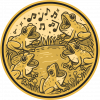
- 0 Resources
- 213 Discussions
- 5 Groups
WILDLABS
This account is managed by the WILDLABS Team. Tag us or DM whenever you need help from our community team.



- 20 Resources
- 23 Discussions
- 11 Groups
- @karinnacvijanovich
- | she/her
- 0 Resources
- 0 Discussions
- 7 Groups
WILDLABS & Wildlife Conservation Society (WCS)
I'm the Bioacoustics Research Analyst at WILDLABS. I'm a marine biologist with particular interest in the acoustics behavior of cetaceans. I'm also a backend web developer, hoping to use technology to improve wildlife conservation efforts.





- 8 Resources
- 14 Discussions
- 32 Groups
Sustainability Manager for CERES Tag LTD. An animal health company; animal monitoring, conservation, & anti-poaching/ rural crime. Wildlife, livestock, equine & companion. #CeresTrace #CeresWild #CeresRanch





- 2 Resources
- 20 Discussions
- 24 Groups
- @TaliaSpeaker
- | She/her
WILDLABS & World Wide Fund for Nature/ World Wildlife Fund (WWF)
I'm the WILDLABS Research Specialist at WWF-US



- 14 Resources
- 59 Discussions
- 24 Groups
- @alexrood
- | she/her
WILDLABS & World Wide Fund for Nature/ World Wildlife Fund (WWF)
I'm the WILDLABS Communications and Community Management Associate Specialist at WWF-US

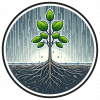



- 37 Resources
- 42 Discussions
- 8 Groups
- @StephODonnell
- | She / Her
WILDLABS & Fauna & Flora
I'm the Executive Manager at WILDLABS.



- 153 Resources
- 669 Discussions
- 30 Groups
Neuroscientist & engineer looking for a data/R&D role in conservation.
- 0 Resources
- 0 Discussions
- 17 Groups
- @hyodopenguin
- | she/her
I am currently a rising junior at UC Berkeley studying data science. I hope to apply data with biodiversity, especially by utilizing camera traps for species classification. People in conservation tech are truly living my dream careers, and I can't wait to get even more inspired!

- 0 Resources
- 5 Discussions
- 23 Groups
Worked as a mechanical engineer for a defence co, then software engineer, then for a research lab specialising in underwater robotics.



- 1 Resources
- 140 Discussions
- 16 Groups
Asst. Prof @ MIT with research at the intersection of computer vision, biodiversity monitoring, conservation, and sustainability.



- 4 Resources
- 14 Discussions
- 5 Groups
WILDLABS is partnering with FLIR to give away a FLIR ONE Edge Pro to 5 community members.
26 June 2024
Wildlife Drones was deployed by Zoos Victoria in a trial project tracking captive-bred Eastern Barred Bandicoots that were tagged and released into the wild
14 June 2024
WildLabs will soon launch a 'Funding and Finance' group. What would be your wish list for such a group? Would you be interested in co-managing or otherwise helping out?
5 June 2024
Now accepting applications for two $15,000 grants to help protect wildlife through cutting-edge, technology-driven efforts
3 June 2024
The IEF's Elephant Conservation and Research Funding Support Program has opened a call for applications. Average grant size is $15K, whereas the IEF funds 20 to 25 projects per year.
22 May 2024
Do you have photos and videos of your conservation tech work? We want to include them in a conservation technology showcase video
17 May 2024
Article
Read in detail about how to use The Inventory, our new living directory of conservation technology tools, organisations, and R&D projects.
1 May 2024
Article
The Inventory is your one-stop shop for conservation technology tools, organisations, and R&D projects. Start contributing to it now!
1 May 2024
Technology to End the Sixth Mass Extinction. Salary: $132 - $160k; Location: Seattle WA; 7+ years of experience in hardware product development and manufacturing; View post for full job description
1 May 2024
Catch up on the conservation tech discussions and events that happened during World Wildlife Day 2024!
7 March 2024
Careers
The SMART Partnership is hiring a Program Director to oversee all aspects of the partnership's operations
21 February 2024
Join the mission to help tackle IUU fishing with cutting-edge tech! The Allan Institute for AI is seeking a Senior Software Engineer to accelerate efforts to make sure those working to restore our ocean have the tools...
21 February 2024
September 2024
event
June 2024
event
April 2024
event
35 Products
1 R&D Projects
37 Organisations
Recently updated products
Recently updated R&D Projects
Recently updated organisations
| Description | Activity | Replies | Groups | Updated |
|---|---|---|---|---|
| Hi all,maybe it helps 😉 My free manual 'Drones in Biomonitoring' - https://doi.org/10.5281/zenodo.8077113 can help to get (more) knowledge how to proceed easily and successfully... |
|
Drones, Marine Conservation, Wildlife Crime | 6 days 20 hours ago | |
| Great!!! |
+32
|
AI for Conservation, Drones, Emerging Tech, Human-Wildlife Conflict, Wildlife Crime | 2 weeks 1 day ago | |
| This is great!!!!! Thank you for sharing |
|
Wildlife Crime | 1 month ago | |
| Hello guys,I'm looking into the topic of measuring species vulnerability to overharvesting of species in trade. I am exploring existing... |
|
Ending Wildlife Trafficking Online, Marine Conservation, Wildlife Crime | 2 months 3 weeks ago | |
| I am interested in expanding our capability and understanding of snare detection by canines. We have two canines working in Asia that have successfully detected snares in training... |
+16
|
Wildlife Crime | 4 months 3 weeks ago | |
| Hi Scott, thanks so much for sharing your thoughts here! It would be great to learn more about this, would you be interested in finding a time to chat? Thanks! |
|
Marine Conservation, Sustainable Fishing Challenges, Wildlife Crime | 5 months 2 weeks ago | |
| Hi Danilo. you seem very passionate about this initiative which is a good start.It is an interesting coincidence that I am starting another project for the coral reefs in the... |
|
Acoustics, AI for Conservation, Biologging, Camera Traps, Citizen Science, Climate Change, Community Base, Connectivity, Drones, Emerging Tech, Human-Wildlife Conflict, Open Source Solutions, Sensors, Software and Mobile Apps, Wildlife Crime | 6 months 1 week ago | |
| Fire detection is a sort of broad idea. Usually people detect the products of fire, and most often this is smoke.Many home fire detectors in the US use a radioactive source... |
|
Community Base, Conservation Tech Training and Education, Data management and processing tools, Ethics of Conservation Tech, Human-Wildlife Conflict, Open Source Solutions, Protected Area Management Tools, Sensors, Wildlife Crime | 6 months 3 weeks ago | |
| Hi folks! Happy 2024 and thanks in advance for your patience in case I over-used tags. If you’re using any form of natural language... |
|
AI for Conservation, Citizen Science, Climate Change, Conservation Tech Training and Education, Data management and processing tools, Early Career, East Africa Community, Emerging Tech, Ending Wildlife Trafficking Online, Ethics of Conservation Tech, Human-Wildlife Conflict, Open Source Solutions, Software and Mobile Apps, Wildlife Crime, Women in Conservation Tech Programme (WiCT) | 7 months 1 week ago | |
| Will you accept personal/hobbyist focused on conservation on their small plots of land (10-100 acres)?I would, and know others, who would happily pay more than the official... |
|
Camera Traps, Climate Change, Community Base, Connectivity, Emerging Tech, Human-Wildlife Conflict, Sensors, Wildlife Crime | 7 months 3 weeks ago | |
| Yes, I considered that one as well. At the time of this post (2016) the full masters wasn't available yet, only the online certificate courses. Unfortunately, both the masters and... |
|
Wildlife Crime | 9 months 1 week ago | |
| greetings! i sent you a PM regarding this, feel free to contact me however is most convenient for you - regards,chris |
|
Acoustics, AI for Conservation, Camera Traps, Climate Change, East Africa Community, Wildlife Crime | 1 year 3 months ago |
Drones for IUU (illegal fishing activities & vessel monitoring)
20 March 2023 6:00am
14 April 2023 12:57am
Seeing the pictures that @lmccaskill uploaded got my brain storming, so to say. Are you working with similar small boats? I was assuming bigger fishing ships that are registered somewhere. If the boats are not registered and there are no existing photos of them, and you want to identify the individual boats, you'll need to build your own catalogue to train an AI.
However / in addition, if the boats have written text on them with a name or a code or number, like in the pictures, then it should be ridiculously easy to identify boats. No AI needed. I discovered recently that my laptop has started showing find results based on text in photos. If different boats are of the same model, again like in the pictures, then there is nothing else left than what is written on them ... well, perhaps the color scheme.
... or perhaps face recognition if the image quality allows it. But then you'll be at square 1 again with training an AI.
9 August 2024 12:48pm
Hi all,
maybe it helps 😉 My free manual 'Drones in Biomonitoring' - https://doi.org/10.5281/zenodo.8077113 can help to get (more) knowledge how to proceed easily and successfully 😉 It covers topics from buy to fly and data processing.
📖 The manual was developed to help authorities, landscape conservation / maintenance or nature conservation associations etc. in nature conservation to manage their growing monitoring tasks more effectively and cost-efficiently.
🛸 The use of drones can contribute in many ways to increasing the effectiveness of monitoring, reducing costs and minimizing disturbance - https://www.researchgate.net/profile/Steffen-Doering.
Best regards!
Steffen
Mass Detection of Wildlife Snares Using Airborne Synthetic Radar
7 January 2024 6:50am
14 July 2024 9:54am
Hi Heinrich, you are absolutely right about the need for long-endurance drone for such a mission on 250km^2.
Taking a full frame 35mm camera with a 35mm (wide angle) lens you would have a field of view of 123 metres x 83 metres (looking straight down, you want to be looking at an angle and doing this in high contrast lighting, preferably with the sun behind the camera).
If the area was a square 15.8km x15.8km you would need to do 16 km / 123m = 128 transects to cover the area which is 16km x 128 = 2,057km which if flying at 135 km (safe speed for game counting in a high wing Cessna 182) is 15.23 hours of flying.
Endurance and speed in commercially available drones - is what is stopping drones from realising their conservation potential.
Attached is initial (conservative) design performance details.
Contact me on +27 72 472 5318 and we can discuss this further.
31 July 2024 4:30pm
there is this one too:
31 July 2024 6:22pm
Great!!!
Call for Problem Statements! Zoohackathon 2017
17 August 2017 3:21am
10 July 2024 9:07am
This is great!!!!! Thank you for sharing
Enter to win a free thermal camera!
26 June 2024 5:38pm
Case Study: Drone-based radio-tracking of Eastern Bandicoots
14 June 2024 3:53am
New WILDLABS Funding & Finance group
5 June 2024 3:24pm
5 June 2024 4:14pm
6 June 2024 1:38am
6 June 2024 4:16am
Apply! 2024 Conservation Tech Award
3 June 2024 3:51pm
ENVIRONMENTAL CRIMES WORKSHOP 2024
23 May 2024 9:01pm
International Elephant Foundation call for $15K projects
22 May 2024 5:09pm
Measurements for species vulnerability to overharvesting
20 May 2024 3:06pm
Share Your Work in a Conservation Technology Video
17 May 2024 9:06pm
The Inventory User Guide
1 May 2024 12:46pm
Introducing The Inventory!
1 May 2024 12:46pm
22 July 2024 10:55am
23 July 2024 2:05pm
23 July 2024 2:53pm
Hiring Chief Engineer at Conservation X Labs
1 May 2024 12:19pm
Snare detection technologies
23 May 2017 4:19pm
5 February 2019 1:25am
I’m very interested in this topic. I know the thread is a couple of years old, so I’m wondering if there have been any recent tech breakthroughs or new suggestions.
5 October 2019 2:11am
Hi Dave,
How did the trial with the dogs go?
Chris
20 March 2024 7:12pm
I am interested in expanding our capability and understanding of snare detection by canines. We have two canines working in Asia that have successfully detected snares in training scenarios. However, final protocols for training and deployment are being developed and integrated into the team's capability.
A potential enhancement is to add technology that supports the canine's detection capability.
Here's what you missed at World Wildlife Day 2024
7 March 2024 9:02pm
15 March 2024 2:42pm
Species ID Needs?
19 February 2024 7:55pm
23 February 2024 2:10pm
Hello Nadia,
A forensic genetic challenge exists when DNA is destroyed by processes used in manufacturing of derivative animal products, preventing law enforcement in identification of protected species. Alternative methods such as lipid profiles or isotope analysis unique to certain species may be possible but require voucher specimens that may or may not be available and methods that have not been tested or peer reviewed. Examples below:
- derivative products made from endangered shark squalene (eg. Liver oil capsules).
- derivative products made from lion bone and tiger bone (eg. lion bone cake and tiger wine).
This is a law enforcement issue and would like to discuss possible solutions.
1 March 2024 2:27am
Hi Scott, thanks so much for sharing your thoughts here! It would be great to learn more about this, would you be interested in finding a time to chat? Thanks!
SMART Partnership Director
21 February 2024 4:32pm
Senior Software Engineer, Skylight
21 February 2024 3:44pm
New DNA tests achieve first convictions for raptor thefts
13 February 2024 7:12pm
Rapid onsite DNA test identifies bushmeat at airport
6 February 2024 3:47pm
Passionate engineer offering funding and tech solutions pro-bono.
23 January 2024 12:06pm
26 January 2024 3:18pm
Hi Krasi! Greetings from Brazil!
That's a cool journey you've started! Congratulations. And I felt like theSearchLife resonates with the work I'm involved round here. In a nutshell, I live at the heart of the largest remaining of Atlantic forest in the planet - one of the most biodiverse biomes that exist. The subregion where I live is named after and bathed by the "Rio Sagrado" (Sacred River), a magnificent water body with a very rich cultural significance to the region (it has served as a safe zone for fleeing slaves). Well, the river and the entire bioregion is currently under the threat of a truly devastating railroad project which, to say the least is planned to cut through over 100 water springs!
In face of that the local community (myself included) has been mobilizing to raise awareness of the issue and hopefully stop this madness (fueled by strong international forces). One of the ways we've been fighting this is through the seeking of the recognition of the sacred river as an entity of legal rights, who can manifest itself in court, against such threats. And to illustrate what this would look like, I've been developing this AI (LLM) powered avatar for the river, which could maybe serve as its human-relatable voice. An existing prototype of such avatar is available here. It has been fine-tuned with over 20 scientific papers on the Sacred River watershed.
And right now myself and other are mobilizing to manifest the conditions/resources to develop a next version of the avatar, which would include remote sensing capacities so the avatar is directly connected to the river and can possibly write full scientific reports on its physical properties (i.e. water quality) and the surrounding biodiversity. In fact, myself and 3 other members of the WildLabs community have just applied to the WildLabs Grant program in order to accomplish that. Hopefully the results are positive.
Finally, it's worth mentioning that our mobilization around providing an expression medium for the river has been multimodal, including the creation of a shortfilm based on theatrical mobilizations we did during a fest dedicated to the river and its surrounding more-than-human communities. You can check that out here:
Let's chat if any of that catches your interest!
Cheers!
2 February 2024 1:22pm
Hi Danilo. you seem very passionate about this initiative which is a good start.
It is an interesting coincidence that I am starting another project for the coral reefs in the Philipines which also requires water analytics so I can probably work on both projects at the same time.
Let's that have a call and discuss, will send you a pm with my contact details
There is a tech glitch and I don't get email notifications from here.
How are Outdoor Fire Detection Systems Adapted for Small Forest Areas, Considering the Predominance of Indoor Fire Detectors?
8 January 2024 4:27pm
22 January 2024 6:35pm
Fire detection is a sort of broad idea. Usually people detect the products of fire, and most often this is smoke.
Many home fire detectors in the US use a radioactive source and measure the absorption of the radiation by the air. More smoke means more absorption.
For outdoor fire detection, PM2.5 can be a very good smoke proxy, and outdoor PM2.5 sensing is pretty accessible.
This one is very popular in my area.
Presentation opportunity: Text analysis for conservation (NACCB 2024)
8 January 2024 4:05pm
Apply to Beta test Instant Detect 2.0
11 May 2023 10:55am
21 December 2023 3:48am
Will you accept personal/hobbyist focused on conservation on their small plots of land (10-100 acres)?
I would, and know others, who would happily pay more than the official conservationists rate for the service, which could help to further subsidize the project. (Referring to your statement here: https://wildlabs.net/discussion/instant-detect-20-and-related-cost)
Update on SEE Shell App to identify illegal tortoiseshell products
14 December 2023 10:00pm
ICOTEQ launch TAGRANGER® system of products
23 November 2023 1:25pm
Creating Awareness on Bushmeat Offences Using Local Barazas and SMS
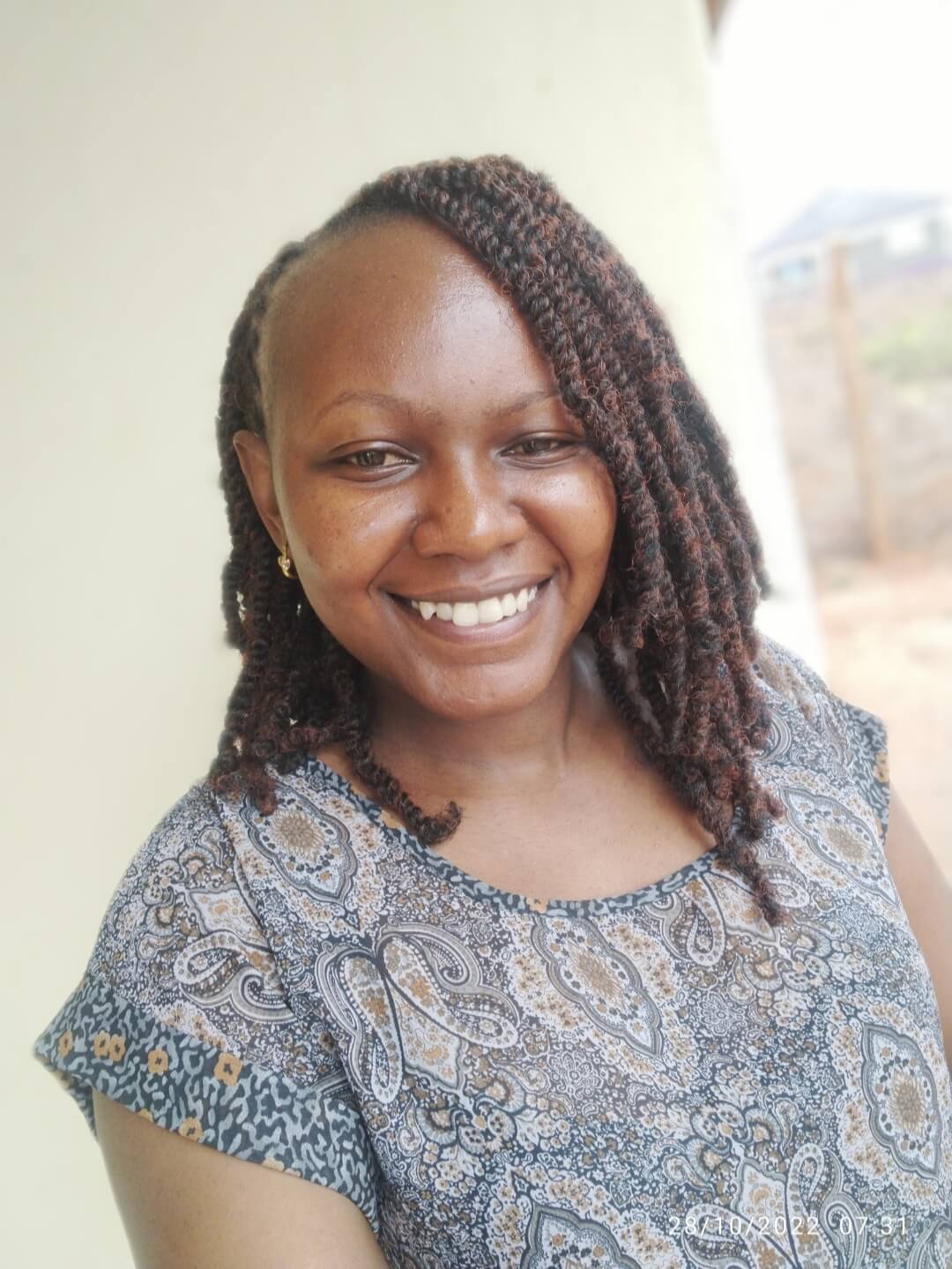 Christine Mwaniki
Christine Mwaniki
14 November 2023 6:44pm





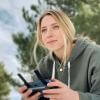








































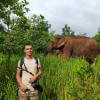

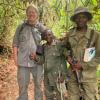








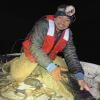



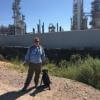








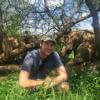


11 April 2023 5:48am
Hi Frank! Thanks so much for your reply. Yes I have been looking into the same sort of workflow as with camera traps etc and seem to be getting somewhere (although am yet to have my own data set with which to check!).
Yes, with the transponder issue, actually NONE of the boats here have them! There has been a push to get boats to install them further down the coast, but it was marred by the usual corruption and forceless enforcement. So everything will be visual, rather than working on any signal given out by the boats themselves. I am looking into ai programs that can analyse footage and as you say, it can be done with species so I see no reason it cannot be done with vessels given the parameters to look for